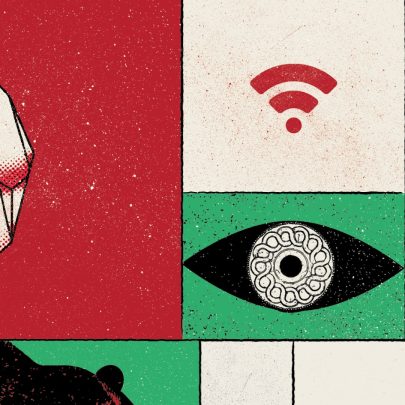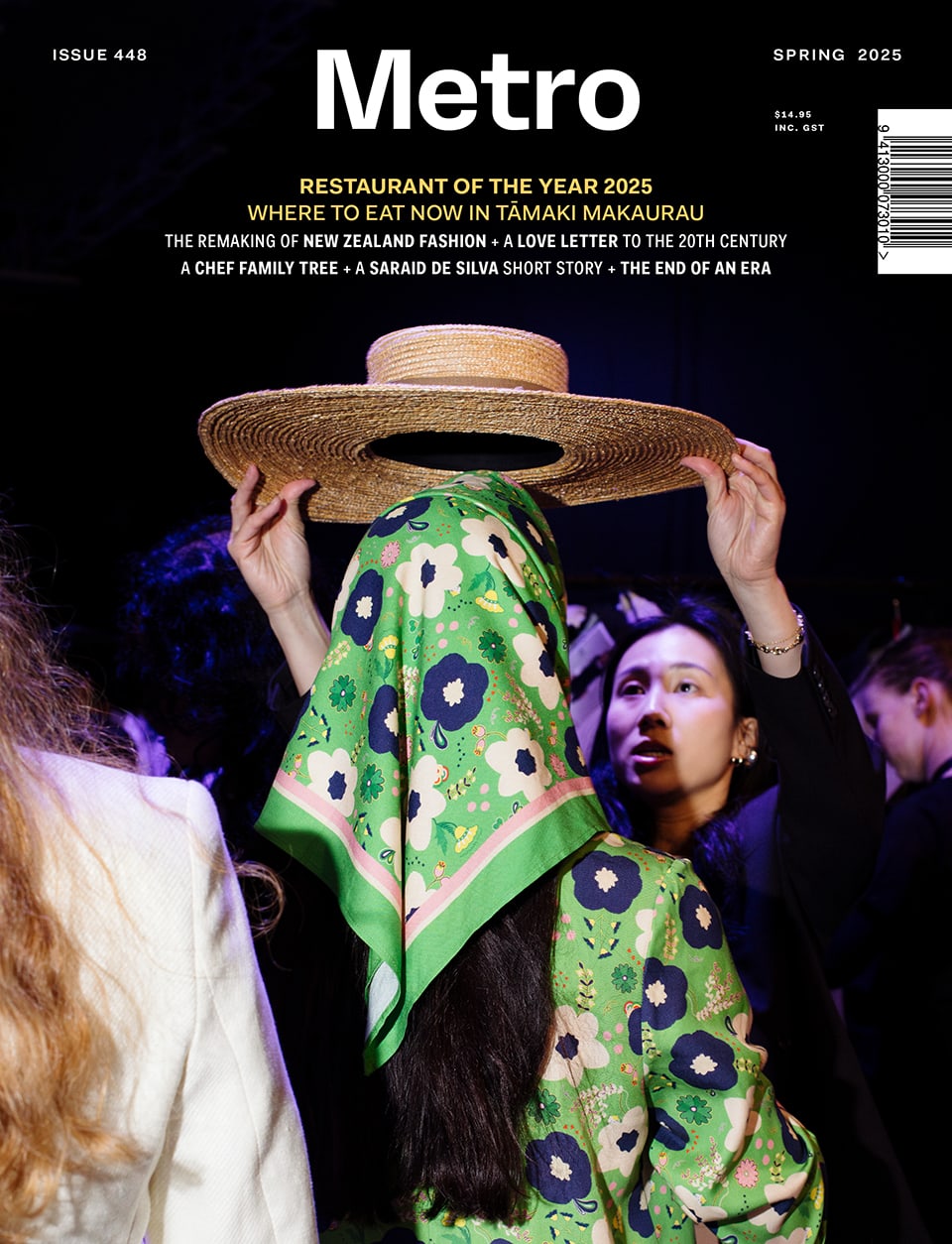Jun 13, 2021 Society
A funny thing happened between Auckland’s Covid lockdowns. The city emerged blinking into the winter sunlight of Level 1 on 10 June before plunging once more into Level 3 in the bleak mid-August. But, by God, did we make the most of July.
Just when looming economic ruin was the staple of our daily news diet, the wealthy shucked off the shackles on their spending. With a Northern Hemisphere jaunt off the agenda, they sure as hell didn’t want to be stuck at home with nothing to play with. Their toy of choice? A shiny new car.
Motor Industry Association figures show that July 2020 was the best month for new-car sales since the 1984 boom fuelled by the incoming Lange Labour government’s pledge to lift the two-year price freeze imposed by Prime Minister Rob Muldoon. Last July, more than 400 new cars a week were sold to Auckland buyers alone (more if you include the nearly 2800 sales to companies), including 48 Mercedes-Benz, 32 BMWs, 22 Audis, eight Jaguars, three Teslas, three Ferraris, three Maseratis, two Alpha Romeos, two Porsches, one Lamborghini and a Bentley.
“In the trade, we call it a sugar rush,” says MIA chief executive David Crawford. “People have some spare cash, want to do something to feel good, so they go out and buy a toy.” Often, that’s a new boat, motorhome or caravan. Crawford found himself on a four-month post-lockdown waiting list when he tried to buy a new Australian- or New Zealand-made caravan, worth around $80,000.
Record low interest rates and spiralling demand, including from returning expats, also trashed predictions that the property market would slump. The real estate sales surge that began between lockdowns gathered pace in spring, with sales volumes up 50-60% on the previous year and the median price breaking the $1 million mark in October. “All of a sudden, people have rethought their lives,” says veteran Remuera realtor David Rainbow, who’s sold houses in the area and eastern suburbs worth more than $1 billion over the past 30 years. “They’ve said, ‘Let’s go and buy an electric bike, let’s buy a motorhome. Let’s enjoy life.’”
So, who’s buying and selling at the moment in Auckland’s tonier suburbs? Rainbow says the Remuera demographic is changing. Vendors, often at or after retirement age, are downsizing — exchanging their stately character homes in favour of lifestyle beachfront properties in Ōmaha, Coromandel or Mangawhai. The buyers — who have to have deep pockets, given that even $1 million will get you precious little here — tend to be aged under 50 with school-age kids, moving from the likes of Herne Bay and Ōrākei for somewhere closer to Dio, King’s prep or Auckland Grammar. “They might have moved to Herne Bay because it was the area to be, but now it’s a pain to get across the city to the private schools.” Some of them might snap up a smaller apartment in Remuera “and keep their Herne Bay house worth $3 million to $4 million but treat that as a weekend holiday home”.
Another agent who specialises in high-end real estate told Metro that if any of his family were buying, he’d advise them “to keep your hand up until you get it. The interest rates now mean it’s free money. It’s just going to get better every day.” Covid has made people realise they’re only here once and they should “spoil themselves crazy”, he says. “They’re thinking, ‘Man, I deserve more. I should have a new house, a Bentley and a beach house.’ You don’t want to suddenly be dead and still have a lot of money in the bank. That day, you want to be broke, with a letter in the post from Amex saying, ‘You’ve gone too far this time, son.’”
For those who didn’t have quite enough to splash out on a new house or car, the opening of downtown Queen St shopping precinct Commercial Bay on 11 June — delayed from March due to the first lockdown — allowed retail therapy for smaller budgets.
Foot traffic between lockdowns was 10% ahead of forecasts, with two million visitors to the 120-store precinct in two months. Precinct Properties CEO Scott Pritchard won’t say how much they spent or on what, but says turnover follows foot traffic “100%”. “Out of that, we’d guess each person might spend $20 a visit.” The lockdowns made eating out and socialising an enjoyable novelty again, he says, although Commercial Bay’s 35 fully occupied hospitality venues took a $1 million hit on the November weekend when Aucklanders were told to avoid the city after a new community case of the virus.
Commercial Bay doesn’t offer any legacy luxury brands, leaving those to the lower Queen St niche filled by the likes of Gucci, Prada and Louis Vuitton, and Pritchard says despite Covid’s economic hit, no tenancies remain unfilled. Likewise, it has only a 1% vacancy rate in the four office blocks it owns downtown, and since the pandemic, only four tenants have wanted to reduce their space.
Our sustained spending spree drove a record 14% bounce in country’s gross domestic product in the three months to 30 September. In that quarter alone, we spent $26.3 billion on cars, appliances and electronics, products for the home and garden, and groceries. As house prices rocketed, so did our desire to renovate, with builders reporting a surge in bookings for high-value jobs such as extensions and decks.
But since it began its global rampage in 2019, Covid has tended to pick off the most vulnerable. And so it was in Auckland. As the well-heeled splashed out, the down-at-heel sank even further. Auckland City Mission handed out more than 11,000 food parcels in that first lockdown — nearly twice as many as usual for the same period.
Auckland has always been a tale of two cities, but Covid has cranked the gap wider. Dickens could have been writing about us: It was the best of times, it was the worst of times.
Jacinda Ardern’s Labour-led government was justifiably praised internationally for its “go hard, go early” response to the pandemic which, over two lockdowns, largely eliminated community spread of the virus, allowing life to return to near normality by spring, and averting dire economic consequences.
But critics say those same policies have simply allowed the rich to get richer. They point to the more than $13 billion in wage subsidies paid to businesses, and therefore, in many cases, to shareholders; the temporary $490-a-week income relief payment for Covid-related job losses which was nearly double the rate of the unemployment benefit; and the sustained, record low interest rates fuelling the galloping housing market. Benefits increased just $25 a week in April, and the winter energy payment doubled but it was pretty thin gruel for the needy.
New Green MP Ricardo Menéndez March, who left after three years as coordinator of Auckland Action Against Poverty (AAAP) on his election in October, says only an immediate and significant increase in benefits will begin to close Auckland’s inequity gap — something the new Labour government has already ruled out any time soon. But Menéndez March says the way the government opened its wallets during Covid proved that political will rather than fiscal prudence is the only thing stopping the move. “We saw how they introduced a new benefit type during Covid [the income relief payment] and increased debt and spending… Literally the only thing here is that they just don’t want to.”
Author and wealth-inequality researcher Max Rashbrooke agrees it’s a political rather than a fiscal decision. “The government’s basic risk aversion and cautiousness mean that the response to Covid has tended to favour trying to prop up existing institutions and using relatively orthodox methods rather than doing something a bit bolder, so we’ve just followed the pattern of most disasters, which hit the poor harder than the rich. We’ve kind of fallen into the same trap. The wage subsidies were aimed at keeping businesses afloat and the monetary policy has been very focused on lowering the cost of borrowing for business. That’s been used by property investors, driven up the price of housing and exacerbated the divide between the housing haves and have-nots. If you already own property, it’s easier to borrow to buy more of it.”
Even Australia’s conservative centre-right government did more for beneficiaries by doubling jobseeker benefits between March and September, and continued to supplement them to the tune of A$150 a fortnight until March this year.
But Rashbrooke, who has been researching a new book as the JD Stout Fellow at Victoria University, says he’s nervous about suggesting the government response to Covid has simply fanned the flames of inequality. “That’s from people who are just focused on the housing market.” Despite going to businesses, the 12-week wage subsidy will have reduced inequality, he says. “It did keep people in their jobs and that is really good for limiting the increase in poverty and boosting incomes in the long run, so there is a mixed picture.”
The runaway housing market is deeply worrying, however, given the likelihood of “generational scarring” if people in their 20s, 30s and 40s can no longer buy their own homes, see their money disappear in rent and have significantly worse lives as a result.
Rashbrooke favours a guaranteed minimum income set at about the same rate as superannuation, which he believes would be affordable, but a very hard sell to a strongly judgemental New Zealand public. An increasingly unequal society is making that attitude more entrenched, he says. “You see concentrated neighbourhoods of wealth and concentrated neighbourhoods of poverty and people don’t mix as much as they used to. The rich see much less of the poor than they used to and their kids don’t go to the same schools. People lose sight of other people’s lives. They don’t understand what it’s like to be beneficiaries. They don’t know poor people, they don’t understand how difficult it is, or the social forces that push people into poverty, so their sympathy is a bit diminished.”
Last year, AAAP, the Child Poverty Action Group and First Union joined forces with Louise Humpage, an associate professor of sociology at the University of Auckland, in a survey of more than 200 beneficiaries in which nearly half (44%) reported they were unable to meet basic household costs more often since the first lockdown. Six out of 10 said they needed around $250 more a week to cover those costs.
Humpage believes the Covid income relief payment was an example of policies that actually enhance inequality. “I’m not against the wage subsidy,” she says. “Some of my family received that, and they’re like, ‘This isn’t much money,’ but it was much more than most people get when they’re unemployed. It said that there are two classes of unemployed people.”
Rashbrooke agrees the payments favoured people newly out of work over the long-term unemployed and “you could say that increased inequality”, but again, he adds, it’s complicated. “I have a bit more sympathy for the government on the Covid relief payments than others, because that kind of social insurance is pretty normal in a lot of European countries and reflects the fact that if you’ve recently been employed and on a decent salary, you’re going to have higher costs and need a cushion to keep afloat while you find another job.”
He says the government also quietly removed benefit standdown periods during Covid and believes it’s possible they won’t be reintroduced in July when they’re scheduled to resume.
Humpage points out that not only were people in casual, lowpaid work more likely to lose their jobs in areas such as hospitality and retail that were hard-hit during the lockdowns, but they were also less likely to get redundancy payouts. Employees forced out of higher-paying jobs, or taking voluntary redundancy, could put that lump sum into an investment such as property. “If you have money, you benefit from whatever the economy is doing. If you don’t, basically you’re struggling to eat.”
The extra $25 on benefits made little or no difference — many people received next to nothing because of the clawback provisions on the accommodation supplement. Tenants with income-related rents pay 25% of their income for housing, so if their benefit increases, so, too, does their rent. Participants said they were also disadvantaged by the reduction in supermarket specials, the inability to take children to the supermarket but having no care options, and the expense of getting food delivered.
Humpage says there’s also a gender skew to the support that is available. While women were more likely to lose precarious jobs, New Zealand’s so-called “shovel-ready” infrastructure projects tend to be in male-dominated industries.
Asked for examples she’s seen of Auckland’s wealth gap, Humpage thinks for a second before saying, “Teslas”. She and her partner are both on high incomes, want an electric car to protect the planet and have Tesla envy, but can’t afford the six-figure price tag so drive a Nissan Leaf. “But there are a hell of a lot of Teslas around Auckland — we see one every day.”
Humpage believes Covid has and will continue to widen socio-economic, gender and ethnic inequalities unless game-changing policies are introduced, including meaningful increases in the main benefits, and liveable minimum wages.
In December, she was backed by the PM’s own advisers. In a briefing to Ardern in her role as Minister for Child Poverty Reduction, the Department of the Prime Minister and Cabinet said the economic fallout of the pandemic disproportionately impacted lower-income households and the number of children in material hardship was expected to rise sharply. “The most severe negative effects are likely to be felt by those who are already disadvantaged.”
The same day as the government unveiled its stellar GDP figure, it also announced an increase in the minimum hourly wage from April — to $20 from $18.90. That’s expected to affect 200,000 people and bump the pay of a 40-hour-a-week worker by $44 gross. But of course, you have to have a job in the first place.
The signs outside Debbie Munroe’s Manurewa pop-up drop-in centre, called the Waka of Caring, have a don’t-mess-with-me vibe that helps define her as well. Says one: “If you have come from somewhere else to grab stuff & sell, don’t bother walking in here. This is to help those in need, not your pocket.” Another is addressed to the police: “We allow people to sleep outside our drop-in. Debbie. Call me.”
After running a similar service in her home for eight years, Munroe opened the centre in Mcannalley St, to the south of Manurewa’s “main drag”, a month before Auckland went into Level 4 lockdown in March.
She and her partner sent all the volunteer workers home and lived in the store — packed with donated clothes, homewares, books and food — for three months. Police wanted to shut her down for defying the lockdown by continuing to pass food parcels or clothes to the needy through the door. “The police threatened to arrest us. I said, ‘Can you just wait until I ring the media and then you can arrest me in front of the cameras.’” Three days later, the centre was deemed an essential service and was able to continue operating.
Lives might have been lost out there without them. Family violence, drug and alcohol use and sheer desperation all took off during the pandemic and haven’t slowed, she says. “Guys that I know personally, staunch guys, walk in now with their heads down and tears in their eyes because they can’t feed their kids. Or they go, ‘Debbie, I don’t even know how to pay the power.’”
One night, she found a woman lying on the doorstep covered in blood. She cleaned her up, rang the cops and got them to do the video interview at the drop-in. When she saw another woman outside, crying in her car, Munroe made her a cuppa, gave her a food parcel and some time. The woman texted her thanks that night. “I was thinking about killing myself,” she said.
New Manurewa MP Arena Williams says locals are a resilient bunch, as she found during pre-election door knocks. “We’d say, ‘How is your household?’ They say ‘Sweet!’ But Pink Batts can be coming out of the walls, the roof is leaking, the windows are broken and there is someone sleeping in the car. They’re like, ‘No, we’re going OK’; that’s the character of the people in Manurewa.” During the campaign, her team referred at least one family a week to services that could help.
Munroe and her volunteers give away about 50 food parcels a day — it was 30 a day before Covid. “We know that many people have lost their homes because people are selling up and kicking tenants out. The number of homeless people around us is just crazy. We managed to get 53 people into emergency housing during Covid. Anyone who didn’t have a house would come here and I would ring them and sit with them in meetings to make sure they weren’t screwed with by the organisations that are there to help people who don’t have homes.”
(Ironically, when we met, late in 2020, Munroe had just heard that she would soon be one of them. The seven-bedroom house she was living in with her extended family, including eight children, had been sold and they had to be out by the end of the year. They’d lived there for five years and paid $650 a week in rent. “We’ll find something,” she said, then packed another food parcel.)
Less than a kilometre away at Barfoot & Thompson, the suburb’s oldest real estate agency, which has been selling homes here for more than 60 years, branch manager Tim Carter is gearing up for another big afternoon of auctions of South Auckland properties. Eighteen will go under the hammer from what have been considered down-at-heel suburbs such as Randwick Park, Māngere East, Flat Bush and Clover Park. Commercially savvy investors from the local Indian community are always a strong presence at the auctions; Māori and Pacific buyers aren’t as common.
A number of properties are under offer and the auction has been brought forward. Interest in most — especially those with large sections that can be subdivided and developed — is feverish. Bidding opens at $800,000 on a modest three-bedroom home in Papatoetoe on an 825sq m section and the room ripples with nods, raised hands, shouts and the odd East Coast wave. We’re 75 bids in before the hammer falls at $1,150,000 after just a few minutes.
Houses at the lower end of the rental market are becoming less attractive to investors, says Barfoots’ Manurewa property manager, Katrina O’Connor, because of the spend required to meet new healthy homes standards and the 2020 changes to the Residential Tenancies Act, which give tenants more protection — for example, the end of 90-day “no cause” evictions, rent increases limited to once a year, a longer notice period when the property is to be sold, and new conditions around evictions for anti-social behaviour.
“The standard of investor-owned properties is increasing, which is not a bad thing, but for tenants, it can have negative impacts. The $450-a-week properties are selling [often to first-home buyers]; it’s the $800- to $900-a-week ones that are becoming available, so it does leave a gap at the lower end.”
The Covid rent freeze was also detrimental to tenants, O’Connor says. Those who might have had a $20-a-week increase fixed for a year if it had been applied in April faced a $50-a-week rise when the freeze lifted.
It’s a 10-minute drive west from Munroe’s drop-in centre in central Manurewa to the once-notorious locale of Clendon Park. Hyped in the Herald’s property section a few years back as possibly Auckland’s last affordable suburb, it sits on the Manukau Harbour foreshore (“sea views!”). The median price to buy here is just over $600,000; in Remuera, 30 minutes and a world away, it’s $2.1 million. Around 40% of the 10,000-odd people who live in Clendon Park are on a benefit; around a third of those are jobless and a quarter of households are solo-parent families. Handing out food parcels is one of the church’s biggest tasks. Retired Anglican vicar Mark Beale, who built St Elizabeth’s Church here from scratch in the late 1980s, can remember when the fabric of his small community began to fray. Those already hit hard by years of the Rogernomics economic changes of the Lange government were KO-ed when Jim Bolger’s National government decided, shamefully, to punch down on beneficiaries and low-income workers in the 1991 “Mother of All Budgets”. State-house rentals were increased to “market rates” — an accommodation supplement was introduced to compensate for some of the difference — and welfare payments were cut.
“This community got turned on its head. It was completely ruined,” says Beale, who chaired the board of trustees at the local primary school at the time. What had once been a stable, family-oriented suburb became transient almost overnight, with student turnover rising to 30% of the roll each term.
Young families who discovered their $80,000 house was now worth double that moved out and up and property investors moved in. “The investors were gaining through the accommodation supplement, so the overvalued house was being subsidised by the government. We needed to stabilise the community to turn it around.”
Beale formed a housing trust and, with the aid of a community-minded developer, built six brick homes near the church at cost. They were then sold, or leased at low rents to needy locals. New Prime Minister Helen Clark, in an apparent embrace of the idea, launched Labour’s housing policy at the church in 1999.
Today, the families in these homes pay about half market rent. Through Beale and a church donor, tenants were given a monthlong rent holiday during the first lockdown. Among them were parishioners Vaiolima and Sosefo Mailangi and their five children, aged from two to 12. The couple have been in the three-bedroom home for nearly eight years. In that time, the rent has risen from $300 a week to $315. When steelworker Sosefo’s hours were cut from 70 a week to around 40 during Covid, they sometimes couldn’t afford even that, but made up the shortfall later. “In another place, we’d be out,” says Vai. Now, they’re trying to save around $100 a week towards a deposit on a home. At this rate, it would take them around 25 years to save the $150,000 deposit they’d need on a $750,000 house.
Without the church’s help, Vai says, they’d be likely sharing crowded quarters with extended family and facing an uncertain future, instead of the years of stability they’ve given their children. “Without Mark, we wouldn’t have this. Or we would, but we’d be eating nothing.”
Days into Auckland’s second lockdown in August, Manurewa High School principal Pete Jones revealed around 10% of the school’s 2000-plus roll hadn’t returned after the first one. They’d gone out to work instead, often casual gigs in supermarkets or courier warehouses, as the adults in their family faced layoffs or reduced hours. It was testament to the kids and their values, Jones told Metro, because they put their family first. “That’s huge. They’re putting their own aspirational dreams on hold.”
As the school year ended, Metro asked Jones if they ever came back, but he says it’s not that simple. Roll churn is a constant here, and so is the reason for it — the rising cost and unaffordability of housing.
As the students straggle up the main drive to the school at exam time, a flashing digital billboard at the front gate hails the latest prizes they’ve won, in sports, the arts and academia. For most, it will be the only time they get to see their name in lights. “Kids’ going to work has always been an issue for us and Covid exaggerated that,” says Jones. During an average year, 10-15% of students will leave, either for jobs or because their families have moved out of the district. “We saw it first a few years ago when there was more transience into our community because families were getting pushed further out of Auckland. Now, they are being pushed further out still.”
About 700 of his students — roughly a third of the roll — are from families on long-term welfare, and the most vulnerable to transience. “In the last three years, I have never seen the poverty so high in the community,” says Jones. “That ranges from things as simple as coming to school without being fed or without a uniform, or not coming to school because you have to work, to the other extreme of real trauma in families over many, many years and the toxic stress that creates. Manurewa pretty much tops all the negative statistics for family violence, drug abuse, sexual abuse.”
For some of these kids, school is their happy, safe place. Until, during the lockdowns, it couldn’t be. Manurewa staff had two key at-risk registers working then. The first was those who didn’t have enough to eat — the school got out 90 food parcels to their families in the two days before the first lockdown — and the second was for children in unsafe environments. The school distributed 20 or 30 cellphones to students, with numbers only the guidance counsellor or social worker had. The school worked with Oranga Tamariki and police to help keep the children safe. Did any students come to harm? Yes, says Jones, but he won’t go into details.
Online learning required access to the internet and a laptop — but more than 500 students didn’t have a device. The school gave out more than 240 laptops before the first governmentsupplied devices arrived, but rollout to the rest was slow, with the inevitable impact on their learning.
The school’s trades academy prepares students for jobs in engineering, construction and hospitality, and in 2019, many found work in retail, tourism and hospitality — sectors hammered by Covid a year later.
Jones would like to see a stipend payable to families if their children stay in education, saying the drop-off between NCEA level 2 (level 3 is the highest school qualification) and tertiary qualifications is still more than 50%. “That’s a huge drop for a country like ours, and if you stay in that level 2 space, you’re going to have unstable, low-end employment and all the social issues that go with that. The best combination for our kids is a learn-and-earn situation where they can help to support the family but stay in education.”
For Auckland Grammar School headmaster Tim O’Connor, one of the biggest signs of Covid-enhanced inequality was hundreds of unwanted computer modems piling up in the cupboard. They were part of the Ministry of Education’s $90 million package to help equip students for home learning.
“In the first tranche, we got given $70,000 worth of modems we didn’t need and we didn’t ask for. They were just delivered. We were given a list of families that they said we needed to give them to.” But nearly 99% of Grammar pupils have internet access, and the school was able to sort out any issues the others had, O’Connor says. “I told them not to deliver modems but they kept arriving. I told them they should spend the money elsewhere or direct these things to the right places.”
For Grammar, the takeouts from Covid have been pretty positive, says O’Connor. There was no Covid-related drop in roll, and the school can now transition students to online learning “with the flick of a switch”. For students, the biggest impact was on mental wellbeing, and the loss of connection with other pupils and teachers. Perhaps surprisingly, internal exam results were in line with non-Covid years, suggesting students were resilient to the upheaval.
On December 23, Debbie Munroe and her whānau moved into a new home in Takanini. It’s a three-bedroom house with a two-bedroom renovated shed out the back that she found on Trade Me for $750 a week. No one wanted it because it was an ex-gang pad. “I don’t care,” she says. “At that point, I was willing to move onto a paddock in tents. I didn’t realise how hard it was to get a house and how judgemental people are when you get one.” The week before, she’d sat in a Work and Income office for five hours before staff declined her request for help with the $3750 bond — money she then had to borrow from a friend. “It was because I didn’t have a letter saying we had to be out of the house by a certain day.”
On Christmas morning, she and her helpers arrived at the drop-in centre before 8am and distributed 400 meals, as well as 400 presents for the local kids. “We winged it, but we did it.” Why does she do it? “Because I can. Because you see someone walking in sad and broken and you see them walking out standing strong with a smile on their face.






